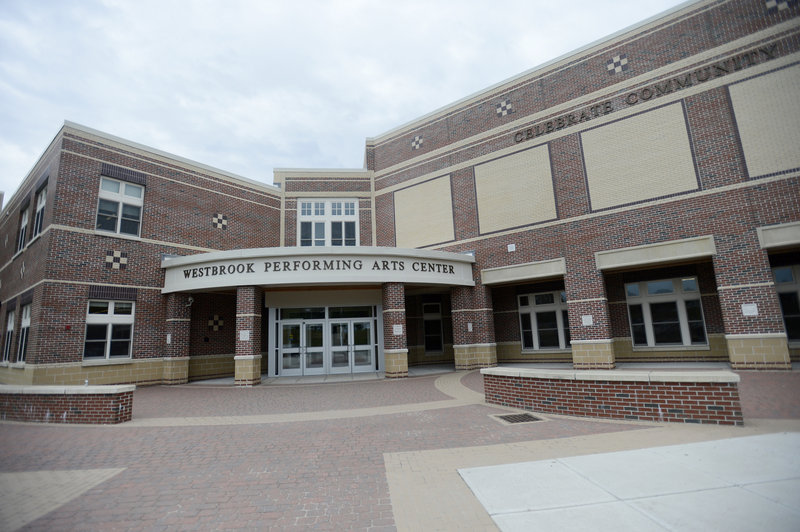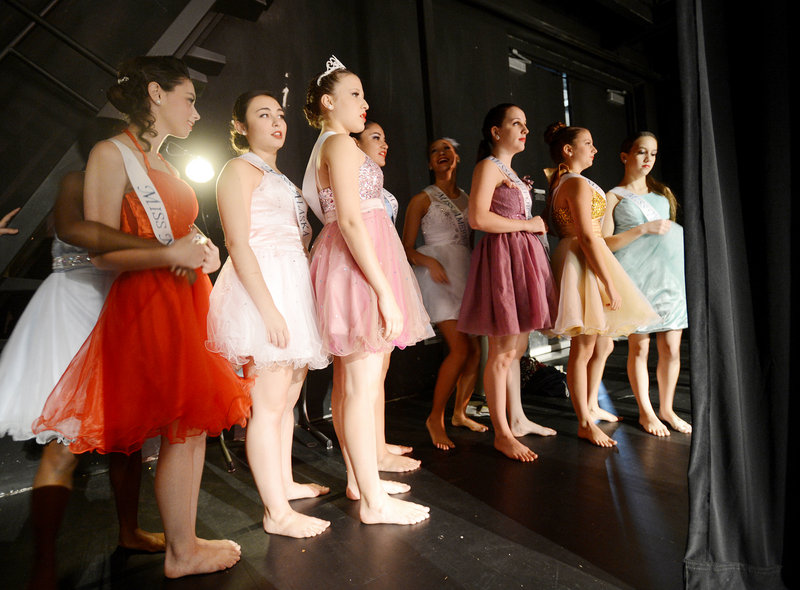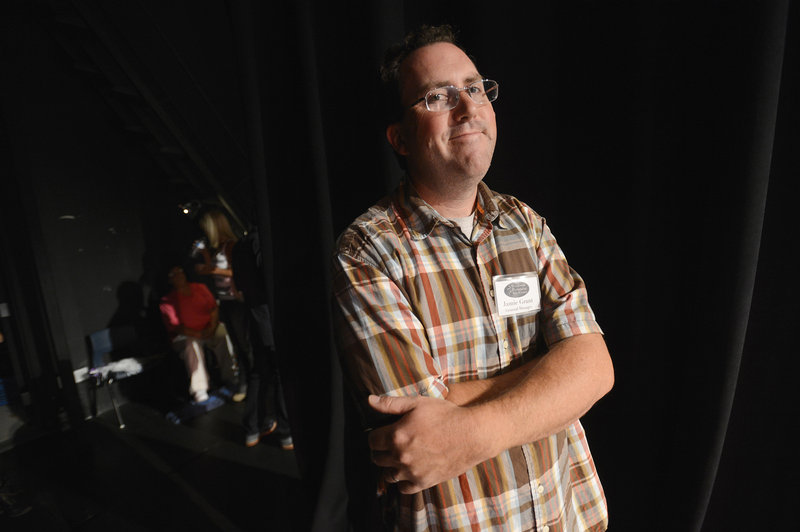WESTBROOK – Rental revenue from the Westbrook Performing Arts Center more than covered the 2½-year-old theater’s operating budget this year for the first time.
But considering that the center ended its first two years in debt, that the cost of utilities is in the Westbrook Middle School budget, and that taxpayers will be paying back the bond for its construction for the next 15 years, this year’s $5,500 surplus doesn’t exactly put it in the black.
Whether the Performing Arts Center should be making more money by now depends on whom you ask.
A business plan written in the fall of 2008 by consultant Christopher Mekal of Boston says the state-of-the-art 1,000-seat auditorium should have showed a $73,000 surplus in the fiscal year that ended June 30.
The plan predicted that the profit would double to more than $140,000 this year and maintain that margin thereafter.
Theater manager Jamie Grant is quick to point out that the plan was created “before the economy went in the toilet.” Also, he said, holding 100 revenue-generating events per year, which the plan envisions, isn’t realistic because of the inconvenience.
“School has to exist here,” he said.
The $4.1 million, 15,000-square-foot auditorium was approved by voters in 2007 as a taxpayer-funded add-on to the planned $29 million middle school, 90 percent of which was funded by the state.
John O’Hara, co-chair of the building committee for the project, said building the auditorium was seen as an opportunity to “get the most for the least” by folding it into the construction of the high-efficiency, state-funded middle school, complete with a geothermal heating and cooling system.
He said the purpose has always been primarily to have “a first-class venue” for city and school events and, secondly, to offer “first-rate acts” to residents of Westbrook and surrounding towns.
In that respect, O’Hara said, “the community has gotten everything that we’ve told them they would and more.”
He acknowledges, however, that he expected it to be making more money by now. He cites the economy for the lack of revenue.
The gap between the Performing Arts Center’s expenses and revenue is closing.
The first event in the auditorium — a day of a cappella workshops and performances for teenage boys — was held in February 2010. By the end of the fiscal year that June, the center had hosted 35 events, four of which paid rent, bringing in about $24,000.
Expenses including Grant’s salary and benefits, marketing and advertising, lighting and tech supplies and travel totaled about $58,000.
In fiscal 2010-11, there were 63 events, 15 of which paid rent, generating $59,000 in revenue — about $23,000 less than expenses.
And, in the past year, there were 95 events, 35 of which paid rent, bringing in just over $93,000 — about $5,500 over budget.
Superintendent Marc Gousse said the School Committee has not decided what it will do with the surplus revenue. It could go back to the Performing Arts Center or be used to offset expenses for the middle school.
Although the revenue for the past fiscal year exceeded the center’s operating costs, other expenses associated with the Performing Arts Center aren’t in its budget.
For example, its heat and electricity costs are folded into those for the entire middle school building. By calculating the cost per square foot, the auditorium would account for about $28,000 of the building’s $250,000 annual budget for those utilities, Gousse said.
And it will be a while before the school department pays off the auditorium’s $4.1 million construction bond, taken out in 2008 at a 5 percent interest rate over 20 years. This year’s payment is $375,000.
Offsetting the financial burden is an economic impact that’s more difficult to measure.
James Tranchemontagne, owner of The Frog and Turtle restaurant, said he can usually count on 20 to 30 additional customers on the night of a show at the Performing Arts Center.
Some events, like the weekend-long Barbershop Harmony Society competition and multi-day dance recitals, bring in even more business, as the performers often eat at his restaurant, he said.
“We definitely see a pop from it,” said Tranchemontagne.
O’Hara sees another, intangible effect that the auditorium is having on the city.
He said he’s heard people from other towns say, after seeing a show in the auditorium, that they “would never believe this was in Westbrook.”
To O’Hara, the impressive venue and its quality acts are helping to change Westbrook’s image from “a sleepy little mill town” to “a go-to place in the Greater Portland area.”
On a Monday afternoon in December, parked cars lined the edges of Stroudwater Street while others took over the parking lot of the Animal Refuge League and the dirt roads of a nearby cemetery.
Noam Chomsky’s lecture through the University of New England’s Center for Global Humanities was expected to fill about half of the theater. By the time the legendary activist started speaking, about 60 people who couldn’t get seats were watching a simulcast that Grant set up in the hallway.
“It was just kind of a freak thing,” he said.
Although the lecture gave the Performing Arts Center exposure, it also highlighted its main flaw — lack of parking.
When a show is expected to more than fill the 373 spaces at the middle school, Grant arranges for a shuttle to the parking lot at Westbrook High School, about a mile down the road. But he knows that people don’t want to spend top dollar on a ticket, then have to get on a school bus.
Because of pervasive wetlands on the middle school property, the solution “is not as simple as just cutting down some trees and putting in parking,” said Gousse, the superintendent.
John York, manager of the South Portland Auditorium, said it’s the one complaint he hears about the Westbrook Performing Arts Center, which he considers his biggest competition for booking acts.
In terms of technology and seating capacity, he knows that Westbrook’s venue has his beat.
But the rates for renting the 800-seat South Portland Auditorium are less than half of those for the Performing Arts Center. Because of that, York believes there’s room for both venues in Greater Portland as more intimate alternatives to the 1,500-seat State Theatre and Portland’s Merrill Auditorium, which has space for 2,000.
“The challenge is, we have no history,” Grant said about drawing acts away from better-known venues.
But 70 percent of the groups that rented the auditorium last year plan to return this year, he said. “We’re creating that history.”
Gousse says the venue is still defining its niche.
“I don’t think people knew, really, going in what it was or what it wasn’t going to be,” he said.
So far, Grant has been open to hosting pretty much anything.
There have been ballets, a body-building competition, church services and a Chinese New Year celebration. Firefighters will converge on the auditorium in November for a conference on bath salts.
One benefit of being in a school building is that there’s room to expand or contract the facility depending on the needs of each event, Grant said, standing in the hallway outside the middle school gymnasium last month during the four-day Dancers Inc. regional competition.
Hundreds of girls were popping in and out of the gym, where they could change their costumes for each performance, to the hallway, where they could line up before getting on stage.
“Merrill Auditorium can’t do that,” he said.
Staff Writer Leslie Bridgers can be contacted at 791-6364 or at:
lbridgers@pressherald.com
Copy the Story Link
Send questions/comments to the editors.






Success. Please wait for the page to reload. If the page does not reload within 5 seconds, please refresh the page.
Enter your email and password to access comments.
Hi, to comment on stories you must . This profile is in addition to your subscription and website login.
Already have a commenting profile? .
Invalid username/password.
Please check your email to confirm and complete your registration.
Only subscribers are eligible to post comments. Please subscribe or login first for digital access. Here’s why.
Use the form below to reset your password. When you've submitted your account email, we will send an email with a reset code.